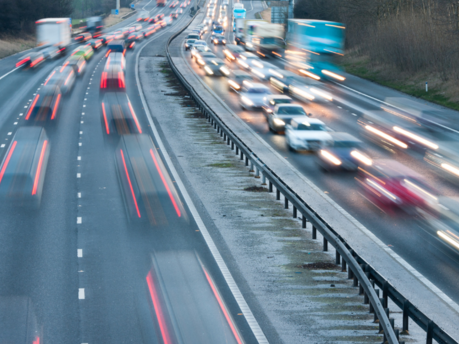How to use smart motorways
A guide to driving on smart motorways
A smart motorway is a stretch of motorway that is controlled by technology to ease congestion and improve traffic flow.
There are three main types of smart motorways, and although the rollout of them has been cancelled across the UK, the existing smart motorways will remain, so it’s important to know how to use them.
What are the three types of smart motorway?
The types of smart motorways that you’ll come across can differ; here is how each one works:
1. Controlled
On controlled smart motorways, the hard shoulder remains permanent, and variable speed limits are displayed on gantries above the road to regulate the flow of traffic. It’s important to stay alert to these changes and adjust your speed accordingly in order to stay safe on the roads, and to avoid getting snapped by speed cameras - their tolerance changes with the variable limit.
2. All-lane running
On all-lane running smart motorways, there is no hard shoulder; it will have been converted into an extra lane, giving motorway users extra room which therefore eases traffic flow. For cars in trouble that would have previously used the hard shoulder, there are refuge areas, complete with a phone that you can use to phone for help.
3. Dynamic
On dynamic motorways, the hard shoulder can be used as an extra lane, or kept as an emergency-only area, depending on the flow of traffic. If the hard shoulder has been opened as a lane, a speed restriction of 60MPH will be implemented and signalled to drivers via the gantry. If the hard shoulder is closed, the gantry will display an X above it.
Why do smart motorways exist?
If you’re a regular motorway user, you’ll be able to recognise the risks that such fast travel over a number of lanes can pose - and how frustrating it can be when you hit traffic on one.
Smart motorways were dreamed up to make life easier, and safer, for motorists, by using technology to regulate the speed of traffic, and the number of lanes it can use. Here are the main benefits of a smart motorway:
1. Reduced congestion
Congestion is often caused by cars doing a variety of speeds, so by bringing speed limits down at busy times, a more steady flow of traffic is created, reducing congestion on traffic hotspots such as the M25.
2. Reduced emissions
By cracking down on stop-start traffic through congestion reduction, there’s a positive impact on emissions too.
3. It’s easier to plan journeys
Motorways can be unpredictable, but the control of traffic flow can make it easier to predict your journey time using apps such as Google Maps.
Why have smart motorways been stopped?
It was announced in April 2023 that the rollout of smart motorway conversions (where an existing motorway is made ‘smart') was to be stopped. This was set out in Rishi Sunak’s leadership campaign, so it’s no surprise that this has been implemented now that he is Prime Minister.
The programme cancellation comes after the cost of converting motorways was called into question, and safety concerns were raised. Here are the main issues with smart motorways:
1. Safety
Given that you’re statistically more likely to have an accident on a road that isn’t a motorway, it baffles many that accidents are made more likely by frequent changes in speed limits. Approaching a variable speed limit zone and braking harshly risks causing an accident, not to mention the removal of the hard shoulder that makes stopping safely for cars in trouble all the harder.
2. Refuge areas on smart motorways
It has been suggested that not only could the refuge areas be a little too small to safely stop in, but also too few and far between. We can’t predict where our cars will break down, and not having access to a hard shoulder could cause serious problems.
3. Confusion about the rules
For those who may not be clued up about the rules of smart motorways, particularly as there are three different types, it can leave room for mistakes, and therefore accidents.
Where are there smart motorways in the UK?
Whether you’re planning a journey or you’re just curious as to where your nearest smart motorway is, here are all the sections of smart motorway in the UK:
| Dynamic | Controlled | All-lane running |
M1 | J10 to J13 | J6a to J10 J23a to 24 J25 to J28 J31 to J32 | J16 to J13 (under construction) J19 to J16 J24 to J25 J28 to J31 J32 to J35a J39 to J42 |
M3 | J2 to 4a |
|
|
M4 | J19 to J20 |
| J3 to J12 (under construction) |
M5 | J15 to J17 |
| J4 to J6 |
M6 | J4 to J10a | J10a to J11a | J2 to J4 (under construction) J10a to J13 J13 to J15 (under construction) J16 to J19 |
M20 |
|
| J3 to J5 (under construction) |
M25 |
| J2 to J3 J7 to J23 | J5 to J6/7 J23 to J27 |
M23 |
|
| J8 to J10 |
M27 |
|
| J4 to J11 (under construction) |
M42 |
| J7 to J9 |
|
M60 |
| J8 to J18 |
|
M62 | J23 to J30 | J28 to J29 | J10 to J12 (under construction) J18 to J20 J25 to J26 |

